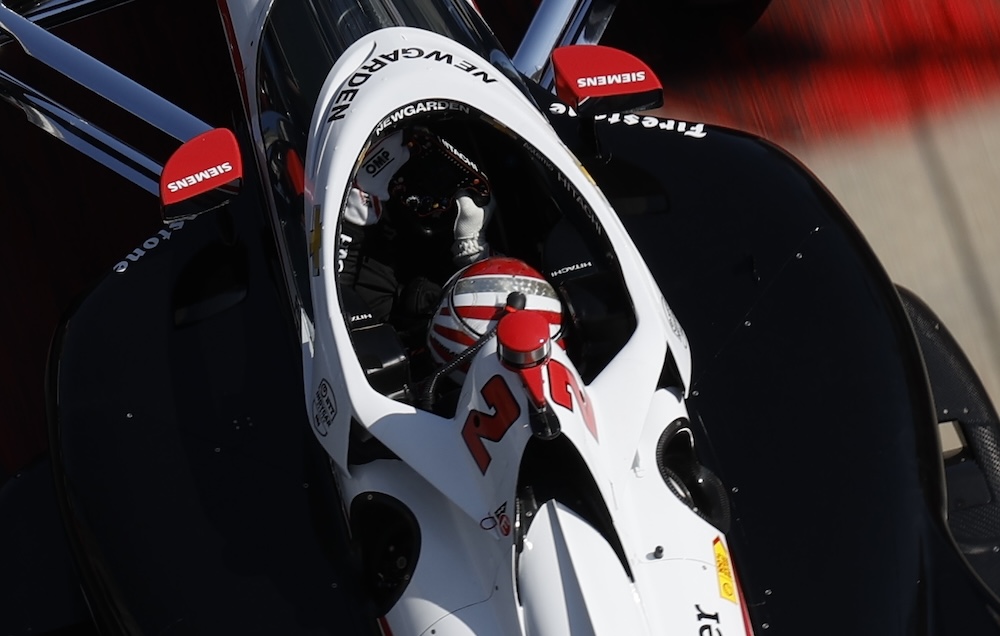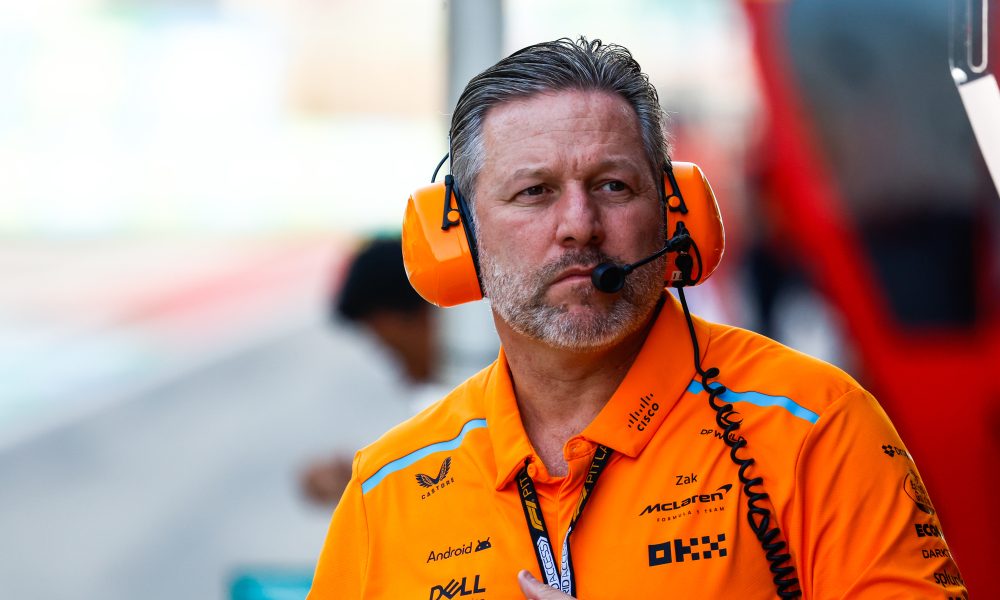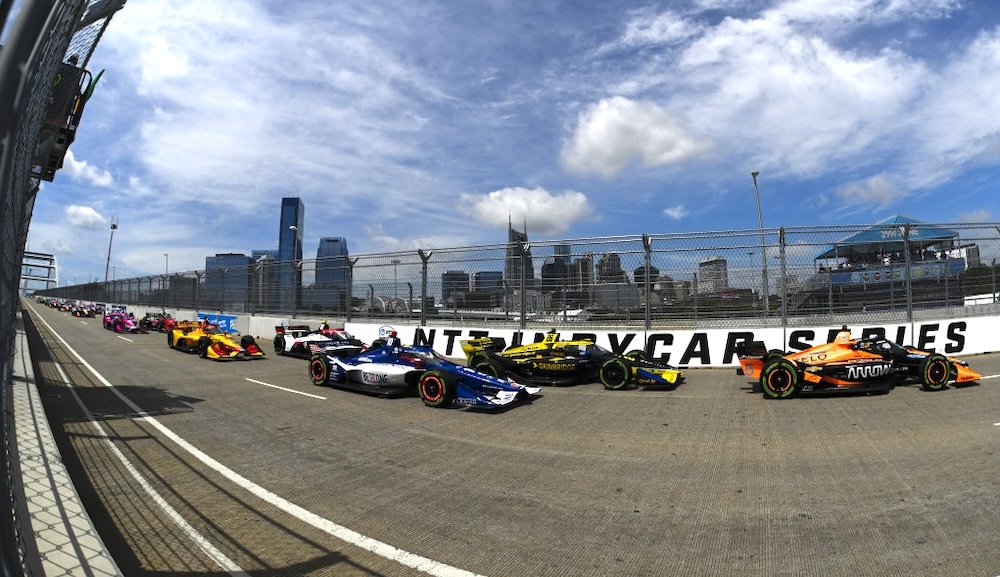IndyCar president Jay Frye is the commissioner of the series he runs. Penske Entertainment CEO Mark Miles is frequently deployed as voice of the executives, which includes series owner Roger Penske. Together, they met with the press in the Barber Motorsports Park paddock on Friday to share insights and field questions surrounding Team Penske’s push-to-pass (P2P) scandal.
A line of code was altered by the team in the Central Logger Units (CLU) that gave its drivers full-time access to P2P across two events, and in response, IndyCar has locked down open access to the CLUs starting this weekend through the deployment of software patches.
Where the engine control modules (ECU) are only accessible by engine manufacturers and the series, the CLUs are the responsibility of each team and act as the hub that captures all chassis performance data, sets the configuration of the steering-wheel mounted dash, and other functions related to monitoring and analyzing vehicle performance.
[lawrence-auto-related count=3 category=1408]
With its interconnected link to the MyLaps timing and scoring transponder, the CLU is used to send on/off instructions to the ECU for the P2P button. With this change, IndyCar is taking control of the matter for the first time. If the series used something other than the CLU/MyLaps gateway to communicate P2P instructions to the ECU, there would be no need to restrict or police the CLUs.
The series is also adding the review of CLU P2P software settings to its technical inspections and will review data from the Cosworth-made chassis loggers after each race to look for any P2P usage infractions.
“Before, they were unlocked,” Frye said. “So that’s one way to prevent this, going forward. There’s a couple of things we’re doing from a race control perspective, that will be different that will highlight things like this (and make them) a little bit more obvious.”
Frye acknowledged IndyCar’s role in failing to catch and halt Team Penske from running its cars in an illegal configuration before the team outed itself in Sunday morning warmup at Long Beach.
“That’s something that obviously we did not catch it. And that’s on us,” Frye said. “So we have to go back and evaluate what we did or what we didn’t do at that point. Obviously, there was talk about the amount of time it took from St. Pete to Long Beach to address this. Obviously, if St. Pete and Long Beach would have been back to back versus five weeks apart, the outcome would have been the same.”
As RACER reported on Friday, Frye’s team reviewed Team Penske’s data from 2023 and did not find any P2P irregularities that warranted additional penalties.
Asked if Team Penske will be treated differently by the series — face more intense scrutiny in technical inspections or lose certain perks and priorities given to its most successful teams — Frye answered in the negative.
“We think the penalty was addressed,” he said of the disqualifications, fines, and loss of points. “It was, we think, severe. And it’s been handled and going forward (we’re) treating (them) just like we always treat everybody else.”
Miles handled the last item of interest regarding his boss. Team Penske was caught by IndyCar on Sunday. Team president Tim Cindric and Penske managing director Ron Ruzewski alerted the series to the illegal uses of P2P it found in its data from St. Petersburg on Monday. The team was informed of the penalties on Tuesday. The series announced the infractions and penalties Wednesday morning with a quote from Frye, and a quote from Cindric accepting the decision was issued at the same time. Penske driver Scott McLaughlin was the first to post a mea culpa on social media Wednesday evening and teammate Will Power followed suit on Thursday. Josef Newgarden met with the media Friday morning.
Throughout the entire affair, the one person who hasn’t stepped forward is Penske, which would seem fitting since it was his team, in the series he owns, that was ultimately punished by his commissioner — a scenario unlike any other among major sporting leagues.
According to Miles, Penske will speak if and when he chooses.
“Certainly (it’s) his choice as to when he wants to… where and how to conduct himself and whether he’ll communicate and with whom is on him to decide whether and when,” he said. “I would just say from our perspective — I think Jay feels exactly the same way — what was really important to us was there was never any question of any interference (from Penske). We could be objective and handle the data. In the same way that we would have handled it for any other team.”



